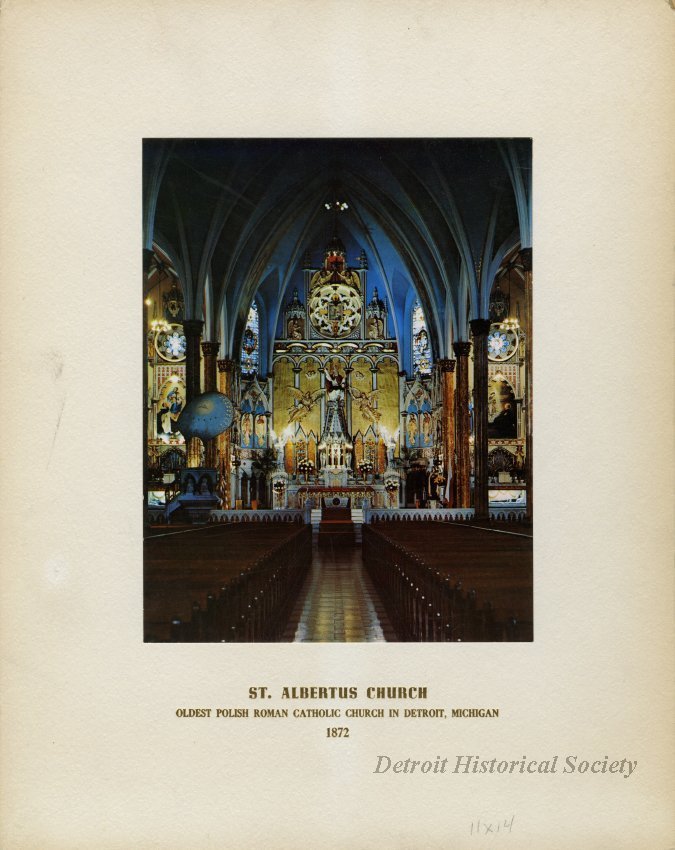In 1871, St. Albertus Parish, Detroit’s first Polish Roman Catholic Church, was organized with about three hundred families. That year, the parish purchased lot 36 of the old St. Aubin farm from Philip Beaubien. Architect John Wiesenhoffèr was hired and construction of a frame church began on June 13, 1872.
In its first decade, St. Albertus had four pastors. In 1882, the Father Dominic Kolasinski was appointed to the post, and under his direction, the parishioners began a fundraising drive to erect the present church. On February 14, 1884, the building committee commissioned the Spitzely Brothers of Detroit to build it. Designed by Henry Engelbert, the brick Western Polish Gothic edifice was dedicated on July 4, 1885. St. Albertus was the first church in the City of Detroit to feature steam heat and electrical lighting. A rectory building was constructed adjacent to the church in 1891. A school was built behind the church in 1917.
Kolasinski was a very controversial priest and had disputes with the Detroit Diocese. In November 1885, the parish broke into factions which led to his suspension. He eventually left Detroit to serve a parish in the Dakota Territory. In 1888, Kolasinski returned at the urging of his followers and established the Parish of the Sweetest Heart of Mary outside the jurisdiction of the Roman Catholic Diocese.
The parish was closed in 1990 as part of a reorganization by the Archdiocese of Detroit. In 1991, a group of parishioners formed The Polish American Historic Site Association (PAHSA) to maintain and preserve the church. The church still hosts monthly masses in Polish, English, and Latin, and is open for tours and weddings.

